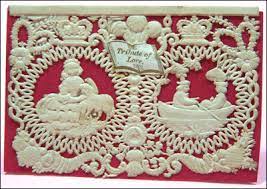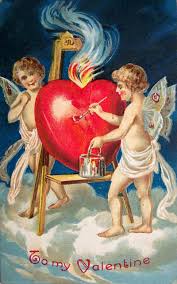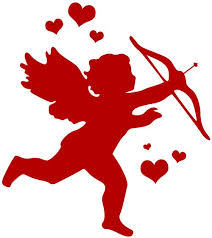(This post was originally published in February 2022)
February is the month when thousands of people around the world will send or receive sentimental or humorous greetings cards from their sweethearts, friends or family members.
So, let’s take a step back in time and examine the history of this unique ‘giving-of-cards’ tradition which apparently all started with a man called Valentine.
Some people believe that Valentine, a Roman martyr who had refused to give up his belief in Christianity, was imprisoned and put to death on February 14 269AD. It is thought that he left behind a farewell note to his jailer’s daughter who had befriended him and brought him food while in jail. He signed his note “From Your Valentine.” This might well have been the very first Valentine Day card.
The giving of a Valentine also comes from the Middle Ages when lovers sang or recited their valentine verses to a beloved, and the oldest Valentine message still in existence was made in the 1400s. Today it is on display at the British Museum.
Early Valentine cards in Europe were made of colored paper and were very popular in England where the wooing of one’s beloved with a Valentine message was especially favored. Cards then were mostly hand-made and came in various designs.
There were, for instance, Acrostic Valentines where the first lines spelled out the loved one’s name. There were also Cutout Valentines which were made by folding the paper many times and then cutting out a lacelike design with small, pointed scissors.

An unusual design originating in the Orient was called the Theorem or Poonah Valentine. This type of valentine was painted through a stencil cut out in oil paper. And a Rebus Valentine had verses inside where small pictures took the place of some of the words. Pinprick Valentines were made, as the name implies, by pricking small holes in paper with a pin or needle, creating the impression of lace.
Fraktur Valentines were popular in the Middle Ages because they were composed of ornamental lettering which was in the same style as the illuminated manuscripts of those times. And a Puzzle Purse Valentine was always enjoyed because it could be read and then refolded. Each fold contained a verse and the verses had to be read in a certain order.
By the early 1800s, Valentines were being made in factories, and much of the charm of the hand-made Valentine card had disappeared. The earliest manufactured Valentines were made on black paper with white pictures painted on them by the factory workers. The more fancy Valentine cards were made with real lace and ribbons with paper lace being introduced about the mid-1800s. By the end of the 19th century, Valentines were being produced en masse by machinery.
Soon after the beginning of the 20th century a card company named Norcross began to manufacture the Valentine card. Then Hallmark got in on the act. The rest, as they say, is history.
Crown Centre in Kansas City is today the international headquarters of Hallmark Cards Inc, the vision of Joyce C. and Donald J. Hall. The building of Crown Centre reversed years of decay in that area which was just blocks away from Kansas City’s commercial district. The Halls managed to halt the decay of that area and revitalize the inner city with their business.
Since 1968, about half of the original 85 acres have been developed and today the Crown Centre complex houses hotels, meeting rooms, restaurants, theatres, and of course the headquarters of Hallmark Cards Inc. The creation of an international institution based on caring gives rise to the Hallmark philosophy of “When you care enough…..”
Each year, Hallmark displays collections of rare and antique cards at their card shops across North America, and many museums and libraries also offer antique valentine exhibitions around St. Valentine’s Day.

Love, they say, makes the world go round, and as long as that is a fact, the Valentine Card along with the commercialism it has brought to the world, will forever flourish.
HAPPY VALENTINE’S DAY!



